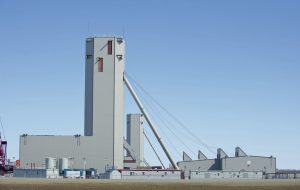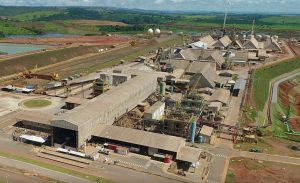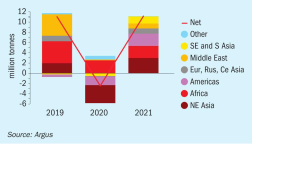
Potash project listing 2021
Fertilizer International presents a global round-up of current potash projects.

Fertilizer International presents a global round-up of current potash projects.

Anglo American plc has announced a number of senior leadership changes. Seamus French has decided to leave Anglo American at the end of 2021 after 14 years with the company and will be replaced as CEO of Bulk Commodities by Themba Mkhwanazi , currently CEO of Kumba Iron Ore. Mpumi Zikalala , currently managing director of De Beers Managed Operations, has been appointed as CEO of Kumba. Both appointments will take effect on 1st January 2022. Mpumi’s successor at De Beers Managed Operations will be confirmed in due course.

Market Insight courtesy of Argus Media

BHP has finally given the go ahead for stage one of its Jansen potash mine project in Saskatchewan, Canada.

INEOS Enterprises has announced the completion of the sale of its Sulphur Chemicals business to International Chemical Investors Group, for an undisclosed sum. INEOS Sulphur Chemicals business is Spain’s largest dedicated manufacturer of sulphuric acid and oleum, serving clients in both agriculture and chemical intermediates via its 400,000 t/a plant in Bilbao. The business will become part of WeylChem’s advanced intermediates and reagents portfolio, which includes an existing sulphuric acid and oleum plant located in Lamotte, northern France. WeylChem is wholly owned by the International Chemical Investors Group (ICIG).

Mining giant BHP’s decision this August to dispose of its oil and gas assets to Woodside Petroleum (see Industry News, page 11) in a deal estimated at $29 billion is certainly eye-catching. But it is also part of a larger pattern of divestment of fossil fuel assets by oil and gas companies who have dominated the industry for decades. It follows divestment by investors, institutional and otherwise, as efforts to tackle climate change consistently point towards a future where we will be using gas, and especially oil, far less – indeed, where many are talking about achieving ‘net zero’ carbon emissions by the middle of the century or shortly thereafter.
India’s power and renewable energy minister RK Singh has placed draft plans before the cabinet for the country’s refining and fertilizer sectors to switch to renewable ‘green’ hydrogen feeds. Other energy intensive sectors such as steel and transport are likely to follow. The policy suggests that refiners must have 10% of their hydrogen consumption generated from renewable electricity by the end of financial year 2023-24, rising to 25% by 2030. The comparable figures for ammonia/urea production are 5% and 20%, respectively. India is pursuing some of the world’s most ambitious renewable energy targets of 175 GW of renewable energy capacity by the end of 2022 and 450 GW by 2030.
Preliminary engineering work has started on a renewable powerto-fertilizer plant in Kenya.

Meena Chauhan , Head of Sulphur and Sulphuric Acid Research, Argus Media, assesses price trends and the market outlook for sulphur.

Gas availability and pricing continues to affect ammonia and methanol output from Trinidad, while Venezuela struggles with sanctions and political instability.